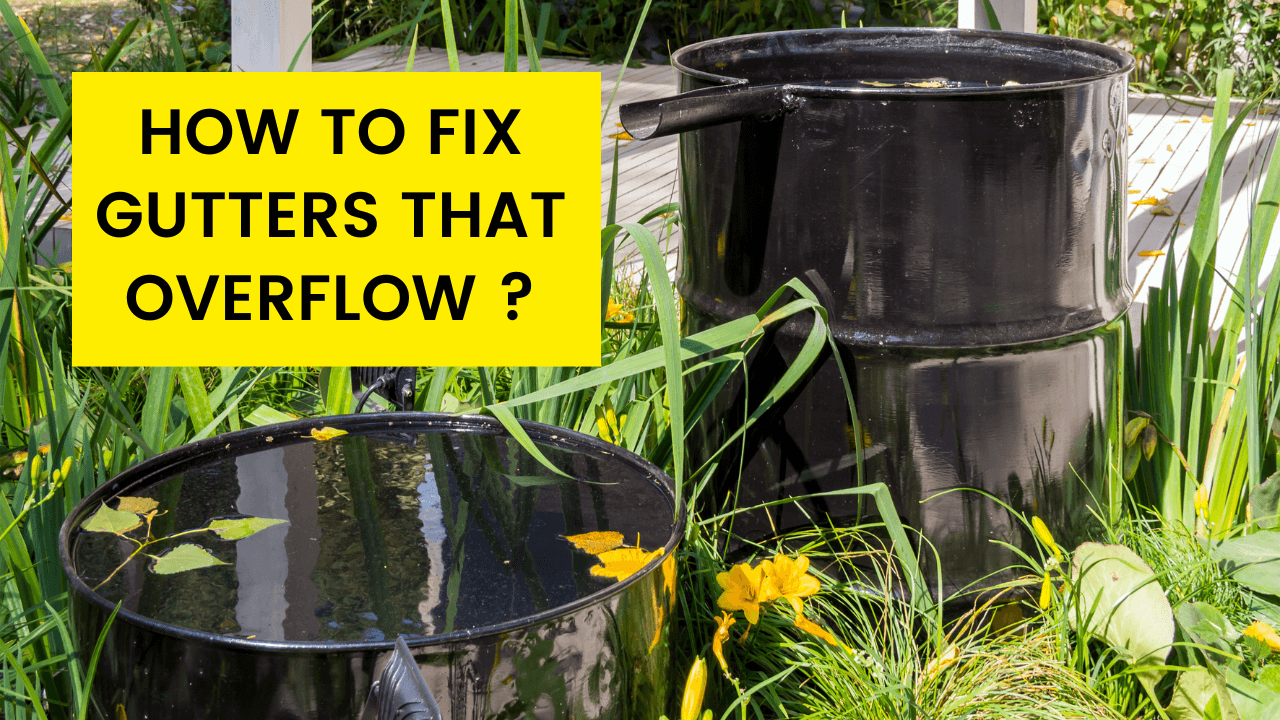Gutters are a crucial component of any house. They sit silently beneath your roof, wicking water away and keeping your home dry. You may not realize how important this job is until your gutters fail.
Gutters are essential for directing rainfall away from your house and into downspouts, preventing water damage to the foundation, walls, and inside of your home.
More significantly, water overflow can cause serious damage to your house, resulting in a pricey repair bill. When it rains, your gutters can overflow for various reasons, and figuring out what’s causing the problem will help you fix it. The concept refers to eaves gutters that are overflowing.
The gutters are supposed to direct runoff water toward your drains, but if something stops this, the water will simply run off the roof and spill over the gutters’ edges.
Table of Contents
What Are The Basic Reasons For Gutter Overflowing?
Gutter overflow occurs for a variety of causes. Gutter or downspouts are blocked with leaves and debris, gutters are drooping, water is not draining to the downspout, or the gutter system is too narrow.
Leaves and trash are usually the culprits. Gutter cleaning should be done at least once, if not twice, a year. Your gutters should be cleaned in the spring and fall. If you live near many trees, this is very crucial.
Leaves are at risk of filling gutters in areas of the Lower Mainland with many street trees. If gutters are pitched wrong, they can also leak. When gutters are level, they pitch toward the downspouts. Poor installation is most commonly caused, but it can also occur over time as your gutters channel heavy rains.
The pitch of the gutters changes when they sag or pull away from home. After that, they fill up with water and move further away from the house. Overflow can also be caused by an overly steep slope, while a lack of pitch can cause rainfall to pool in one location rather than flowing toward the outlet.
Improper Gap Between Gutters Is Also The Main Reason For Overflowing
Water runoff may potentially exceed your gutters if the gutters are too low or there isn’t an adequate gap between the home and the gutter system. Gutters can handle a small amount of rainwater coming from the roofs when it rain. In this case, you have to install large gutters on your home with high hangings.
During rainstorms, instead of going downward, water pools. Near the gutter, look for signs of pooled water and watermarks. The gutters should gently slope down to the downspout.
They aren’t completely flat but are slightly slanted to drain water. You may have a gutter sag problem if this isn’t the case. Sagging gutters can be repaired by tightening or replacing the hangers.
Ways To Fix Gutters That Overflow
Clogged gutters are the most typical cause of overflow. Bird nests might obstruct the gutter channel as well. On the other hand, Clogged gutters are the most straightforward gutter repair. Follow the below discussed steps if you want to fix the overflowing gutters yourself:
1) Clean And Maintain The Gutters
Make sure your gutters and downspouts are clear. Climb up a ladder at least twice a year and scrape out all the debris, including leaves, twigs and rocks that may have accumulated in your gutters. Moreover, using a water hose, run water through your gutters to ensure that it exits through your downspouts.
If not, you may have to break up a clog inside your downspout with a plumbing snake or a high-pressure water sprayer.
2) Check The Position Of Gutters
If your gutters are free of clogs, but water is still leaking onto the ground, your gutters may be positioned incorrectly. First, use a level to ensure that your gutters are not sloping forward or backward. Next, examine the guttering’s slope.
Water won’t flow toward the downspouts if it’s too flat; if it’s too steep, rushing water may splash over the edges during heavy rain.
3) Install Splash Guard In L-Shape
Roof valley runoff can sometimes travel too quickly to train into gutters instead of splashing over the edges and onto the ground. A splash guard is a piece of metal in the shape of an L affixed to the corner of a gutter near the roof valley.
To secure the splash guard to your gutters, simply drill holes through both the splash guard and the gutter and insert rivets into the holes.
4) Focus On Your Gutter Design
If obstructions aren’t causing your gutters to overflow, the gutter design is the next item to think about. Many concerns will limit the quantity of water your existing design can handle, necessitating changes for it to function effectively.
Your gutters may potentially have an excessively steep pitch toward the downspouts. If this is the case, water will flow too swiftly towards the apertures, filling the gutter at the downspout and flowing over the gutter lip.
Conclusion
In the end, you should clean your gutters at least twice a year. Thorough semi-annual cleanings normally cover gutter care. Gutter maintenance not only keeps your gutter in good shape but also allows you to keep an eye out for indicators of deterioration.
You’ll spare yourself the trouble of future pricey repairs and replacements if you can spot the problems early.
You may also safeguard your gutters from harmful overflow concerns by installing a gutter guard system. Leaf guard systems are built of various materials, but the majority function as a screen or shield that allows water to flow into your gutters while keeping leaves and debris out.





